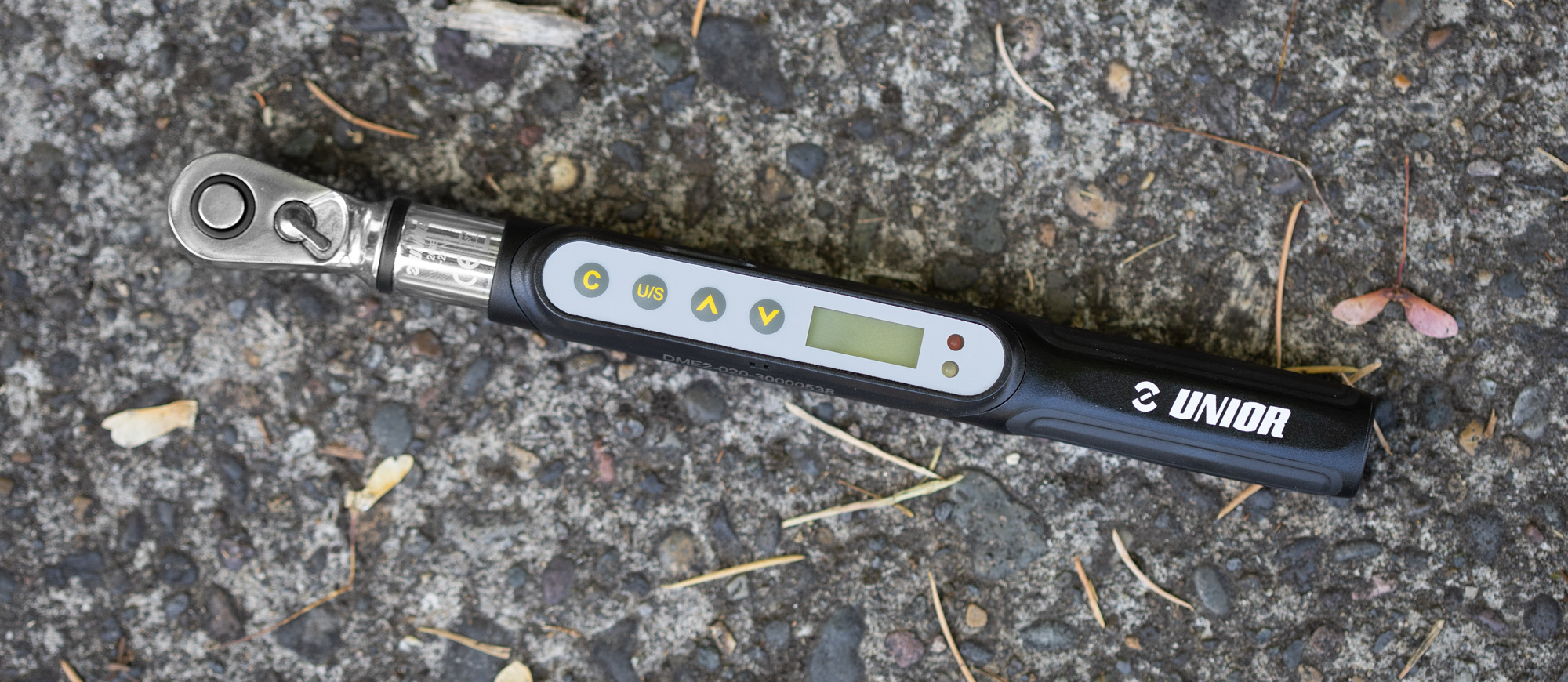Cyclingnews Verdict
The Unior 266b is more expensive than the competition and comes without any accessories. For many people that may put it out of the running but it does have features that make it just a little easier to use. If you want the options, this is your best choice.
Pros
- +
Packaging is a surprisingly convenient case
- +
Both Track and Peak mode available
- +
Beeping and lighting provide two ways to gauge when you've hit desired torque
- +
Standard socket driver allows use beyond a bike
Cons
- -
Doesn't include any accessories
- -
Expensive
You can trust Cyclingnews
Modern bikes are precise machines and every single fastener on a bike carries with it a specific torque range. When you experience a saddle that comes loose during a ride, that's probably because it wasn't properly torqued. Of course, there's also always the worst-case scenario of damaged threads or cracked carbon if you go the other direction and get things a little too tight.
If none of that sounds like much fun, and you'd rather err on the side of caution, then you are going to need a torque wrench. Seriously, no matter how precise you think your arm might be, it's not a torque wrench. If you want to actually hit the specified torque range then you are going to need a precisely calibrated tool to make it happen. To that end, we've put together a list of the best bike torque wrenches out there.
One of the options we included in that list was the Unior Tools 266B in the 1-20 Nm range. It's a digital type torque wrench and it can handle both left-hand and right-hand threaded bolts. Now that we've had a chance to spend even more time with it, we are ready to cover all the ins and outs of it. If you are considering a new torque wrench for your bike. Keep reading to see if the Unior 266B is the right torque wrench for you.
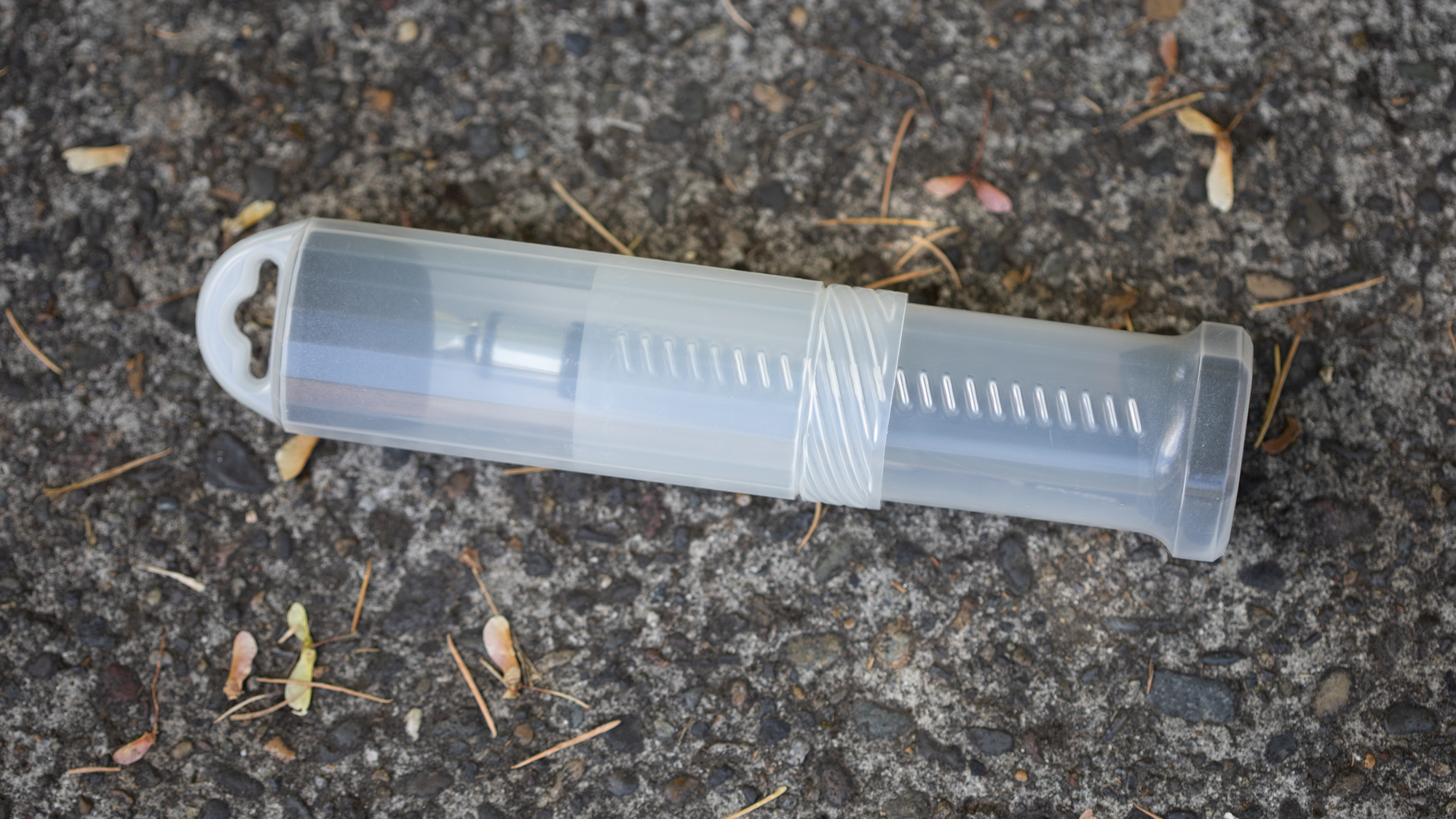
Design and aesthetics
When it comes to high quality torque wrenches, there are two types that get talked about. The Effetto Mariposa Giustaforza 2-16 Pro we talked about recently is a mechanical, click-type, torque wrench. It's a gorgeous tool and we spent time gushing about just how beautiful it is. The Unior 266b is an entirely different animal.
The other type of high-end torque wrench you will see is an electronic type. Instead of using a spring, electronic torque wrenches use a strain gauge. The basic engineering is actually very similar to how a power meter works. There is no click at the desired torque and, relevant to this part of the discussion, there is a very different aesthetic.
Instead of anodized aluminium, the Unior 266b mixes high polish chrome and black plastic. The smaller, 1-20 Nm, range version of the wrench starts with a 1/4-inch square ratchet head. The top of the head features a low-profile release button as well as a drive direction reverse switch. There has obviously been care applied to the design so as to make the top as flat and smooth as possible.
Keep heading back and there's a bit more chrome before the handle gives way to black plastic. This is a look that pales in comparison to a gorgeous mechanical tool but it's perfectly in line with expectations. Every electronic torque wrench looks more or less the same and Unior is following suit.
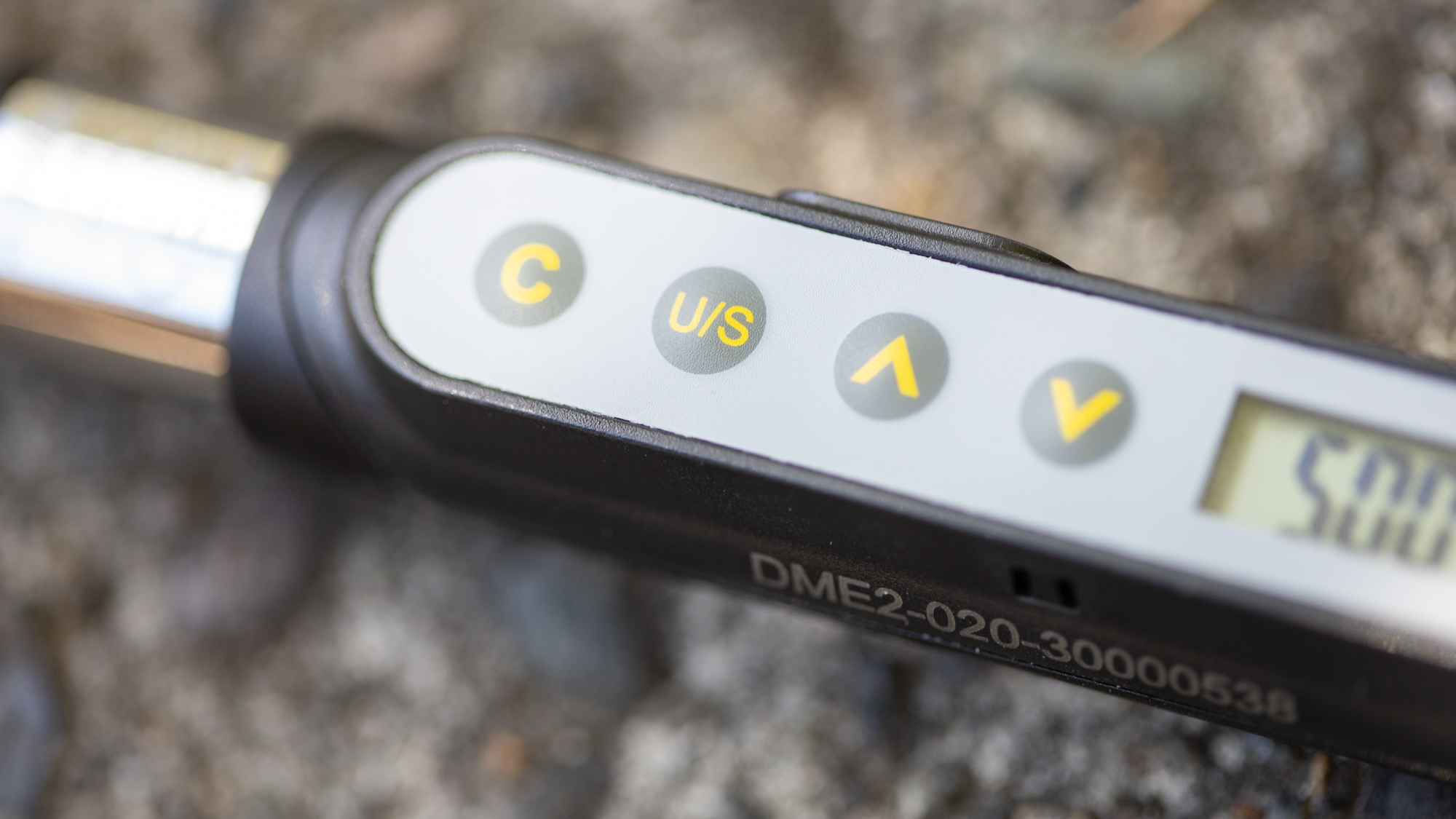
Also similar to other options on the market is a long flat section on the top of the plastic. It's here that you'll find a clear button that's marked "C." Next to that is the Unit selection/Setting button with a "U/S" on top, and finally, there is an up and a down arrow. Keep moving to the right and you'll find the display and the last two things in this area are a red and a green led. To the side of the control area is a covered port that allows a dealer to calibrate the tool.
Behind the control area is a small section with room to grip the tool and a battery door at the back. There's a Unior wordmark and logo in white along with a texture that repeats around the handle. At the very end is a round door with a slot in it. Open this up and there's room for a single AAA battery. The battery door does have an arrow that helps match up the placement but it's nearly impossible to see. Instead, expect to rotate it until you feel it drop into place.
It's also worth mentioning the packaging that the Unior 266b comes in. Torque wrenches are precisely calibrated and dropping them, or banging them into other tools, can throw that off. Unior doesn't supply a case as you might expect but the packaging does double duty. It's a clear plastic tube with a place to hang it at the top and a flat bottom. There are two pieces, with foam at each end, and they thread together. Place the wrench inside and tighten down the outer piece and you've got a pleasant and secure case. It's not beautiful but it does work.
Performance
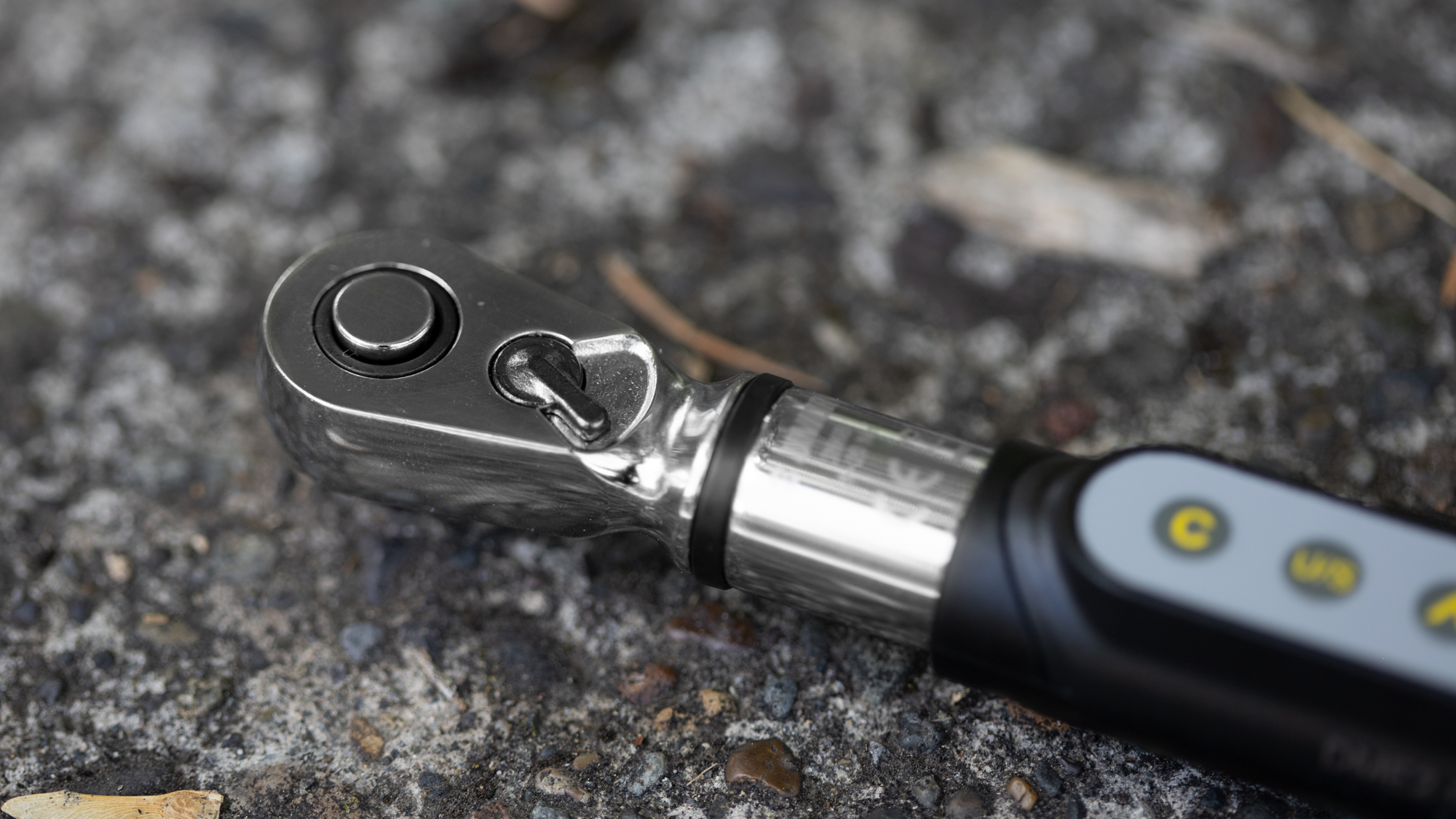
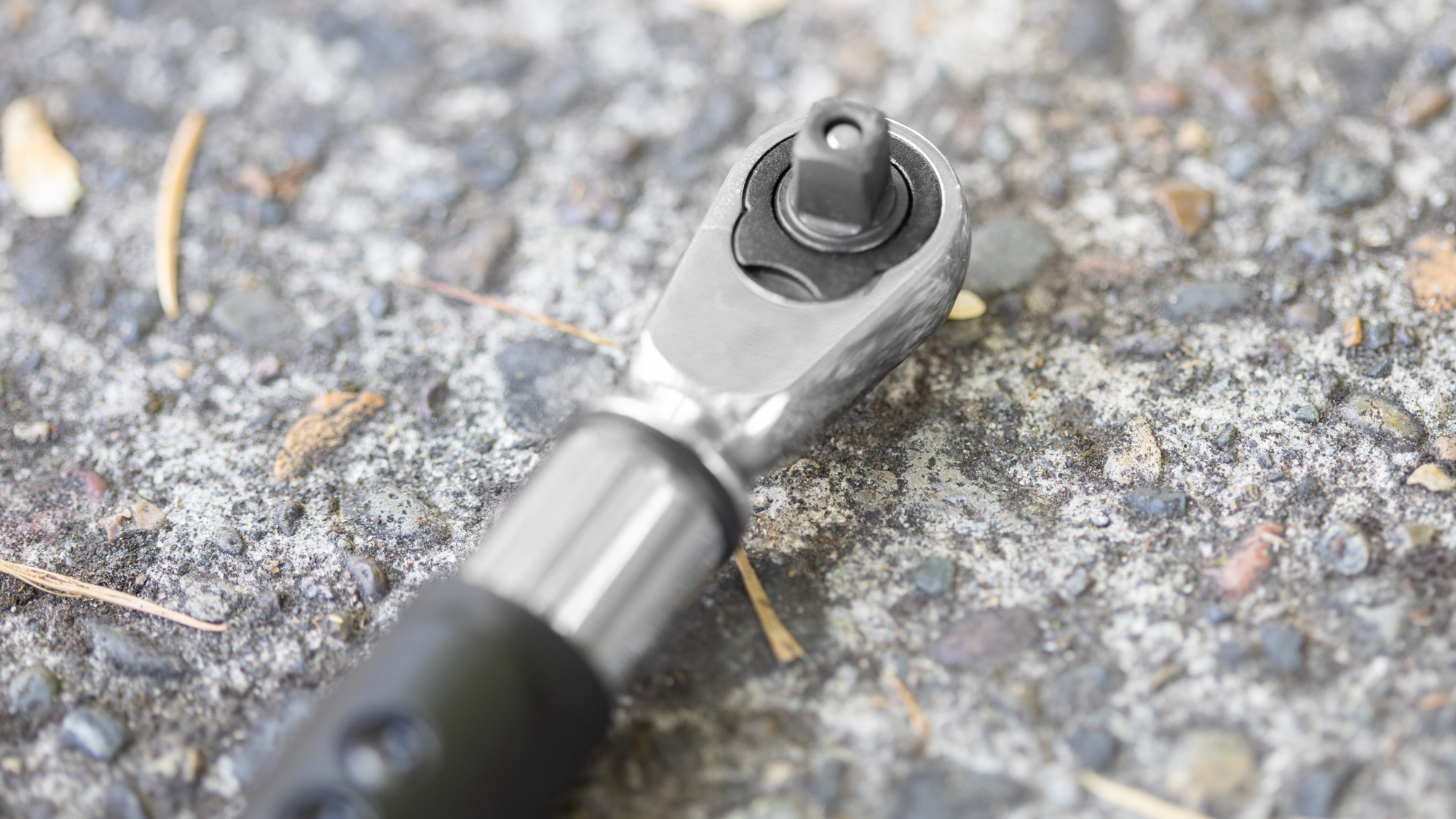
When it's time to use the Unior 266b, the first thing you'll need to do is find a AAA battery. While many brands include a battery, Unior does not. I also wasn't able to get an Amazon branded rechargeable battery to work. Without any obvious directions on the wrench for which way the battery should go, I initially thought I just had it reversed or the wrench was dead. Turns out, it’s just a battery issue. The same battery does work on other torque wrenches but for the Unior, stick to a standard alkaline battery.
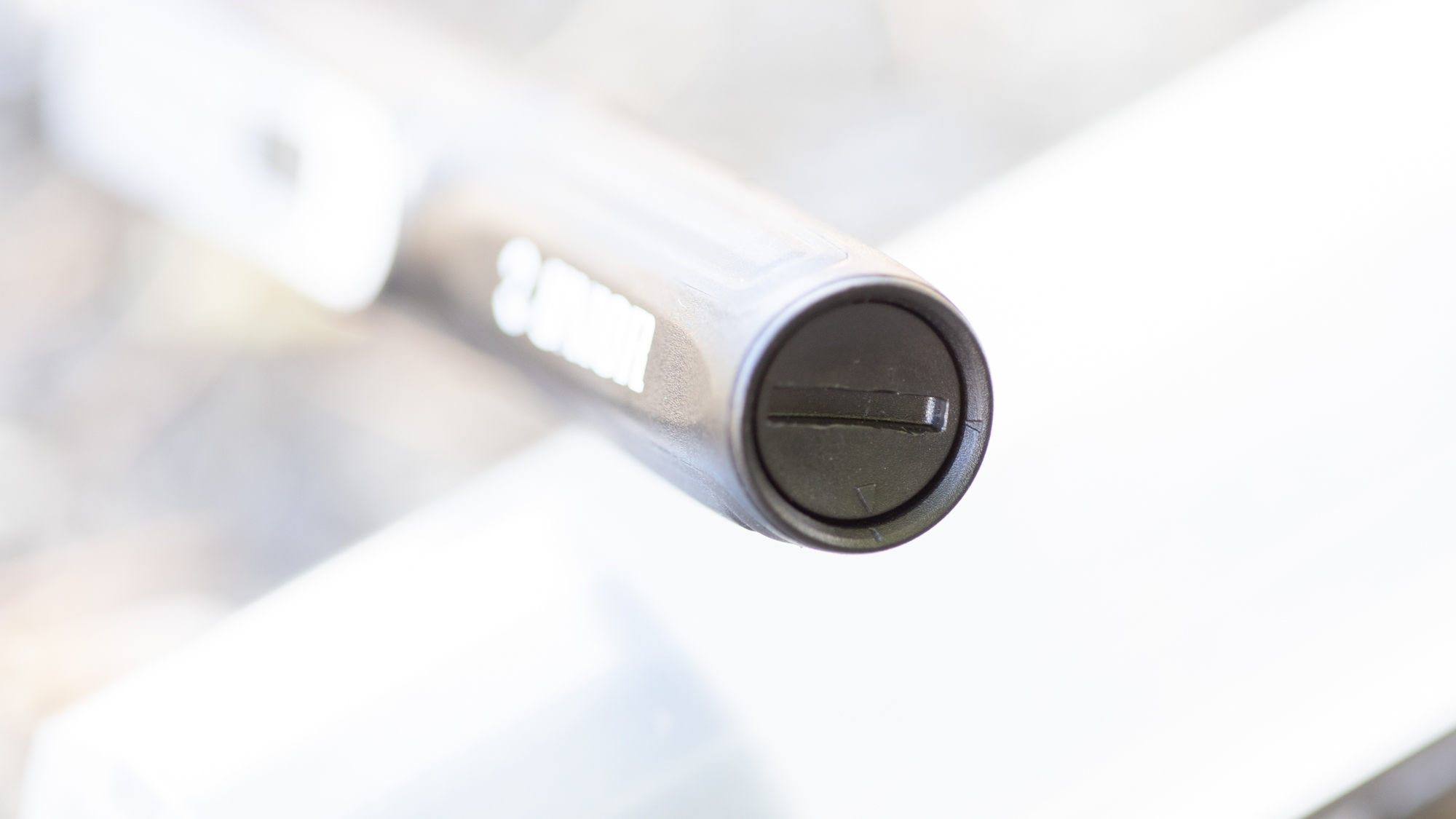
During that process of figuring out if I’d somehow killed a brand-new wrench, I also realised just how simple the Unior 266b really is. A solid press on the Clear button turns it on. At that point, it's in one of four possible torque measurement modes. You can change the scale with a press of the U/S button and it will cycle between Nm, inch-pound, foot-pound, or kg-cm. After five minutes of no activity, the wrench will power off and that setting is something it remembers when it powers back on.
Once you've set your measurement scale, the other two buttons are your up and down for torque selection. Hold one of the arrows and the numbers will fly by silently or, alternatively, a single press will issue a beep and move the scale 1/100th of a Nm at a time. It is possible to go down through zero and bring the wrench to the max to save a bit of time.
The only other function available comes through a long press of the U/S button. Do this and it puts you into a menu where there's options for how the wrench works. This is actually one of the only differentiators between this wrench and the competition. While both Topeak and Shimano have very similar wrenches they both offer only a peak hold mode while Unior has that plus track mode.
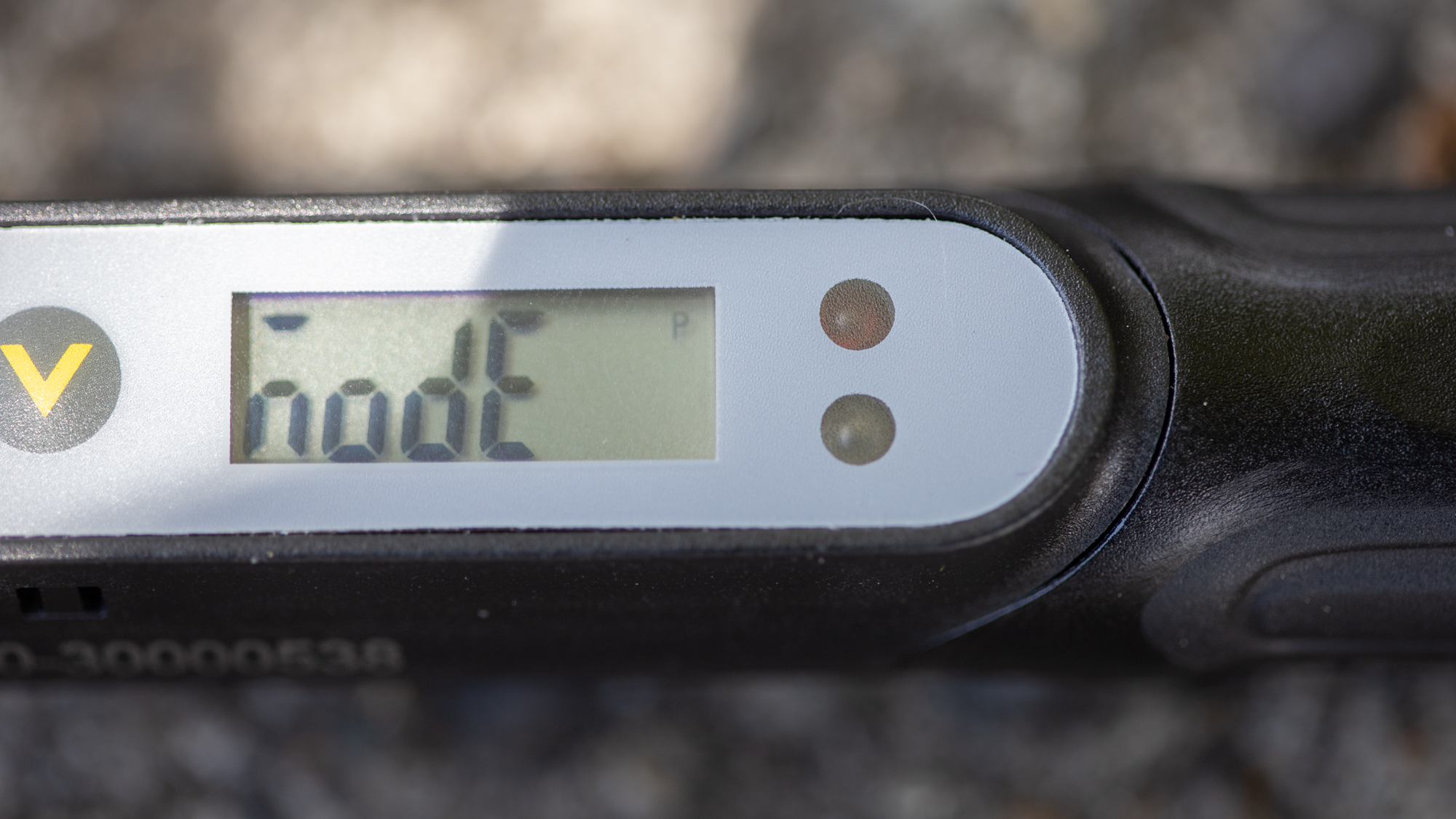
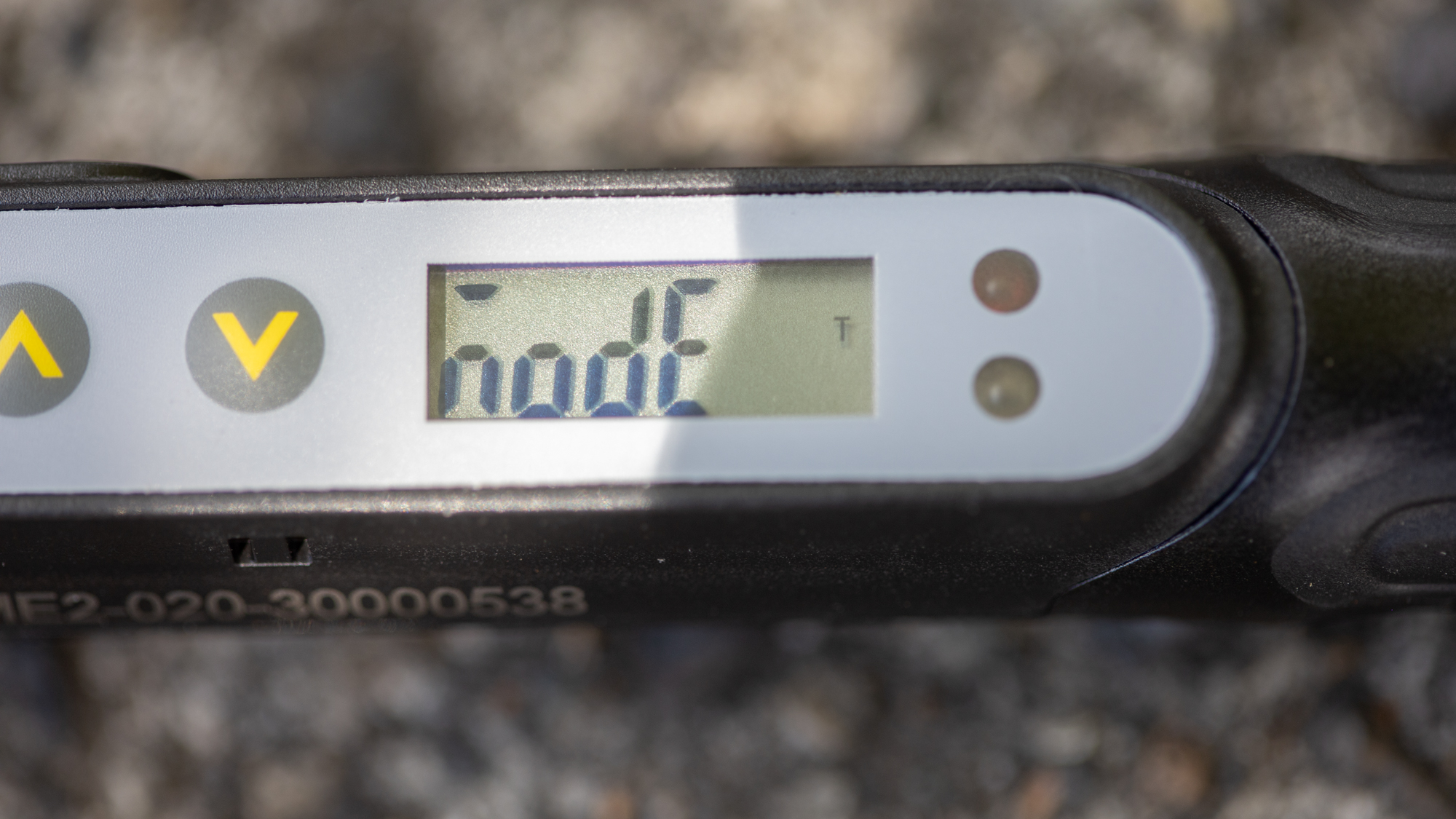
The difference between the two modes is somewhat subtle. As you are turning the wrench, you can watch the torque ramp up on the display. At 90 per cent of the torque selected, the wrench will begin to beep and the green LED will light up. At that point, you'll want to slow your movements until the beeping changes to a solid tone and the red LED illuminates. Unlike a click-type torque wrench, there's nothing stopping you from continuing to tighten. If you have peak mode selected, as soon as you let off pressure the peak torque you've selected will remain on the display. In tracking mode, the display remains active and continues to track the applied torque.
As I said, this is a subtle difference and you'll have to decide if it's worth the extra money for the feature. It is useful to have though. When the torque you are trying to hit is high there's a fair bit of time between 90% and 100% torque value but down near the bottom of the range, it's very fast. When I hear the first beeping I tend to let off a little and if you've only got peak mode the display is now locked. At least for me, it's much more convenient to use tracking mode so I can dial in the exact amount of torque slowly and carefully.
In terms of the rest of the user experience, there's actually very little to report. The operation is simple and the accuracy matches with the other torque wrenches I have on hand. The handle is small but given the low torque range, it feels a lot more controllable with a dainty grip, so that actually works well for me. Once again, it’s also worth tacking on a small note about the packaging. Topeak has a nicer, zippered, case but the Shimano blown plastic case is actually not as pleasant to use as the clever Unior packaging that doubles as a case.
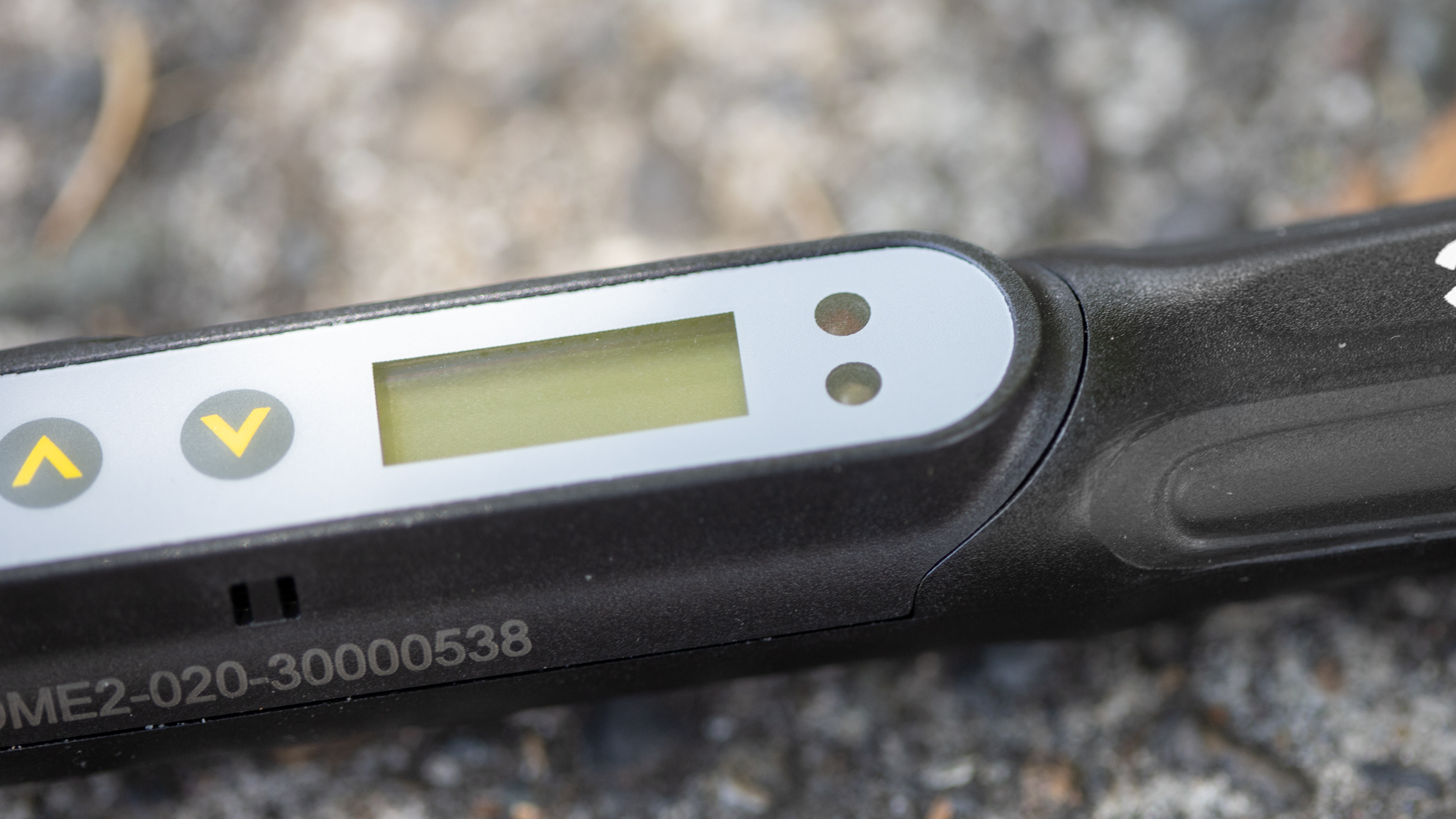
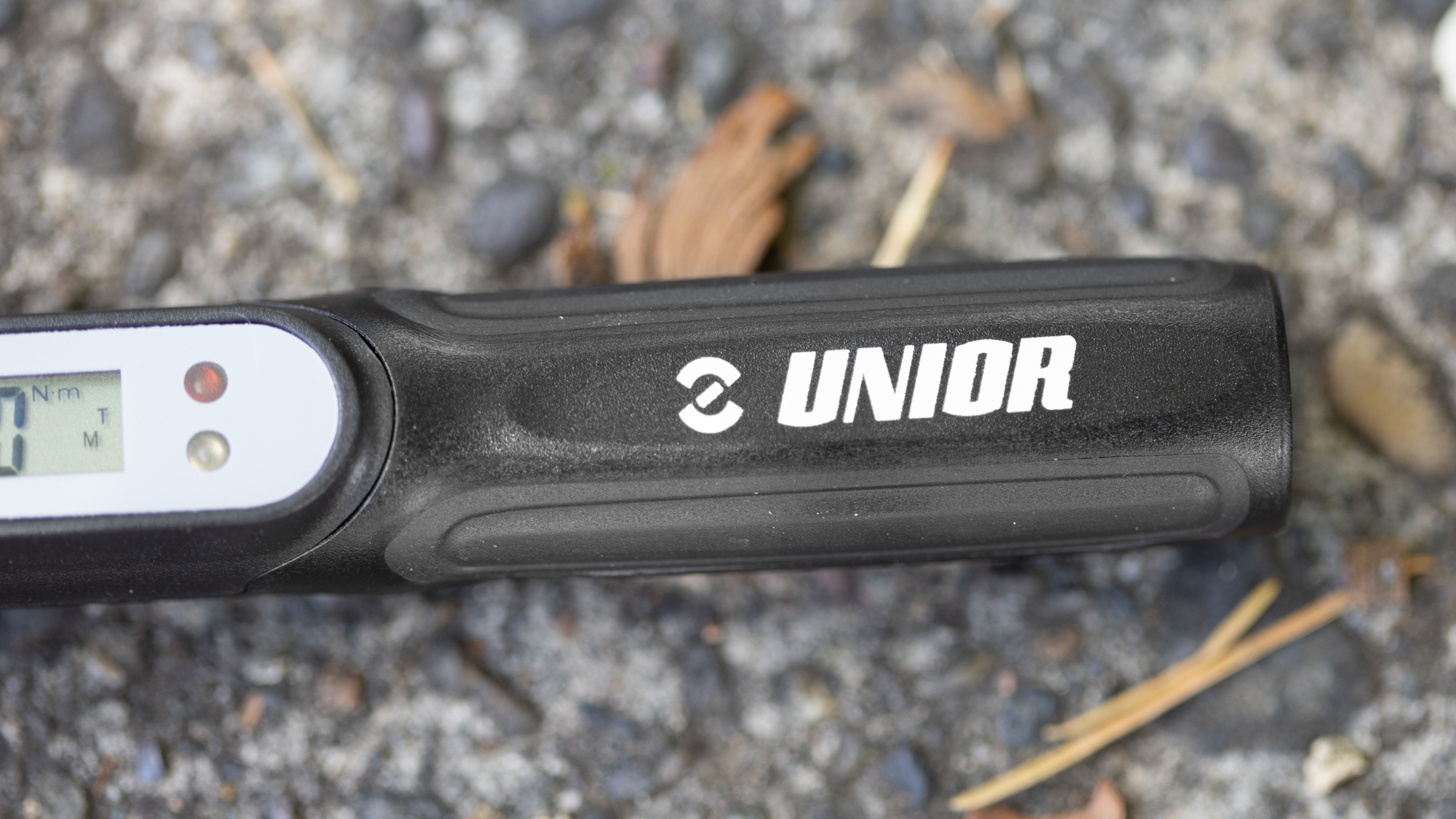
Verdict
If you are thinking about buying a nice torque wrench, the first decision is going to be electronic or click-type. The advantage of an electronic is torque measurement in both directions, the ability to see the torque as you ramp it up, and the option of changing the measurement scale. The disadvantages are that there’s nothing to stop you when you hit the torque you’ve set and an electronic wrench is more expensive.
If you’ve decided to make the choice to go electronic based on the features then that leaves only the price. The Unior 266b only exacerbates this decision. It’s already significantly more expensive than competing products and it doesn't have accessories which effectively means it’s even more expensive. For the extra money paid, you do get a wrench that’s just a little bit easier to use. If you think you are already spending a good amount of money and a bit more for a slightly easier-to-use wrench makes sense, the Unior 266b is worth a buy. If not, grab a competitor.
| Attributes | Notes | Rating |
|---|---|---|
| Build Quality | Well made. | 10/10 |
| Accuracy | We don’t have a laboratory but values aligned with other wrenches. | 10/10 |
| Included Accessories | None | 0/10 |
| Hand feel | Has some specific advantages over other electronic wrenches but the handle isn’t awesome. | 7/10 |
| Overall rating | Row 4 - Cell 1 | 68% |
Tech Specs: Unior 266b Electronic torque wrench
- Price: €212.99 / $339.99
- Included bits: none
- Drive Size: 1/4-Inch Hex Shank
- Measured Torque Range: 1-20 Nm
- Length: 206mm
- Resolution: .01 Nm
Josh hails from the Pacific Northwest of the United States but would prefer riding through the desert than the rain. He will happily talk for hours about the minutiae of cycling tech but also has an understanding that most people just want things to work. He is a road cyclist at heart and doesn't care much if those roads are paved, dirt, or digital. Although he rarely races, if you ask him to ride from sunrise to sunset the answer will be yes. Height: 5'9" Weight: 140 lb. Rides: Salsa Warbird, Cannondale CAAD9, Enve Melee, Look 795 Blade RS, Priority Continuum Onyx
